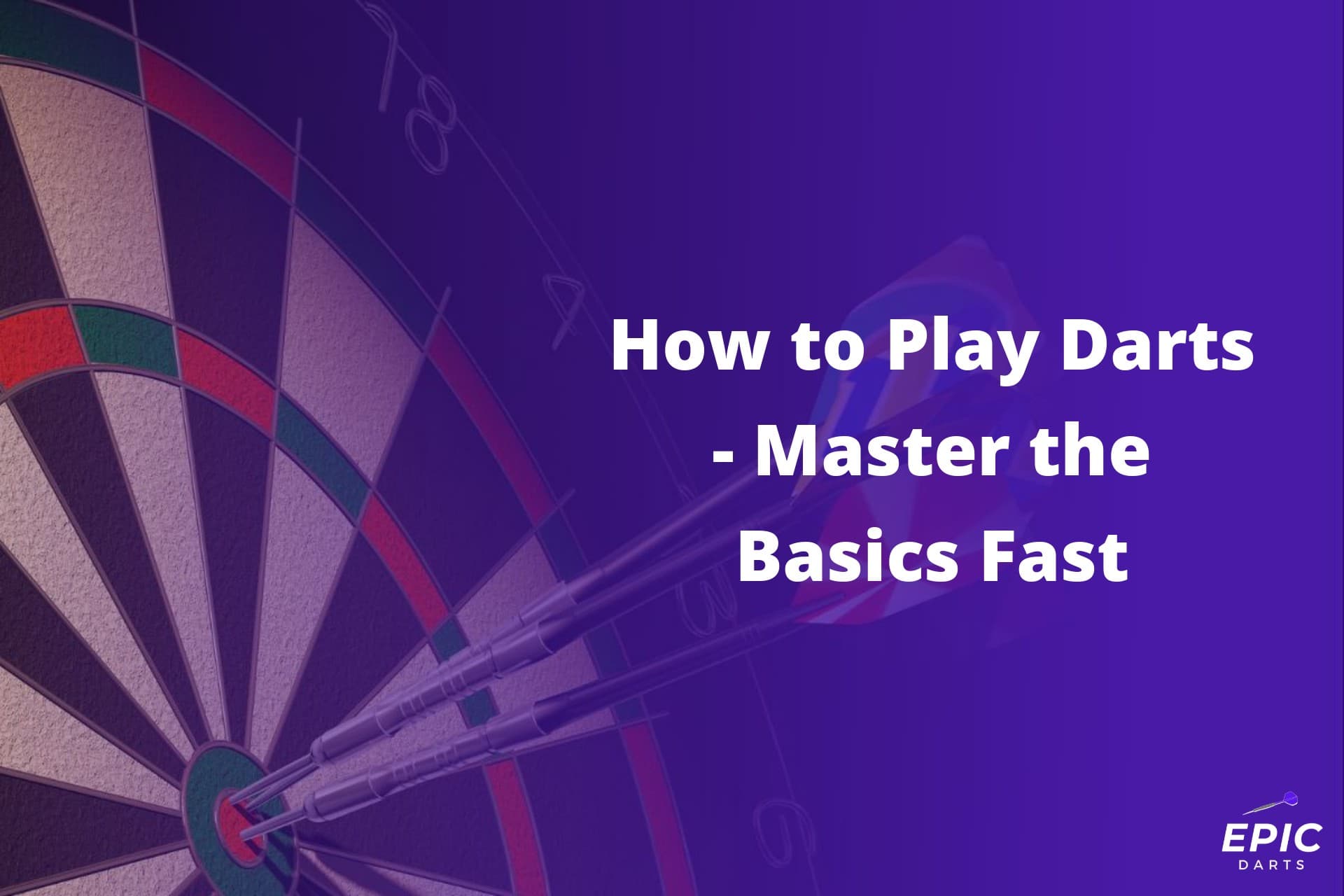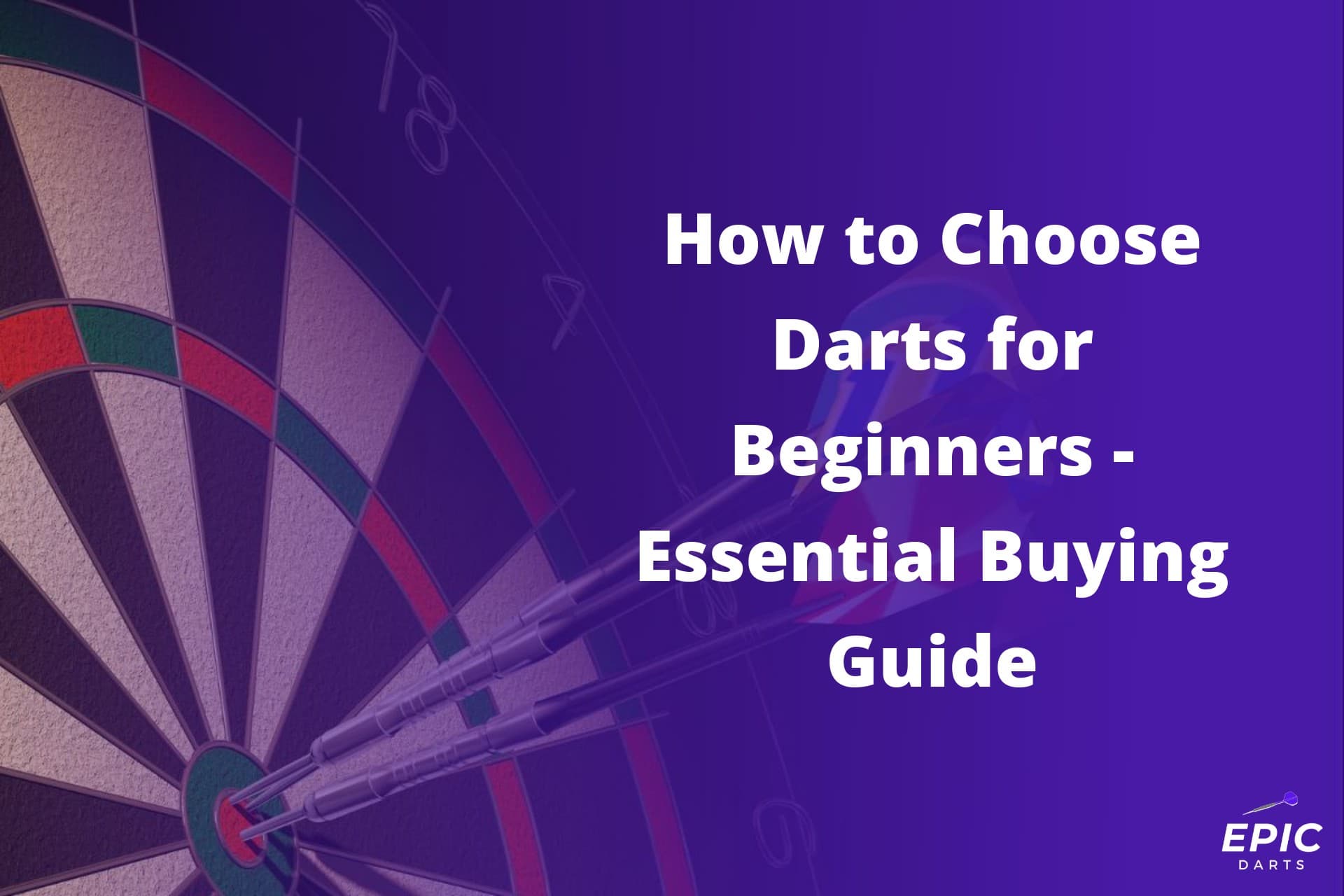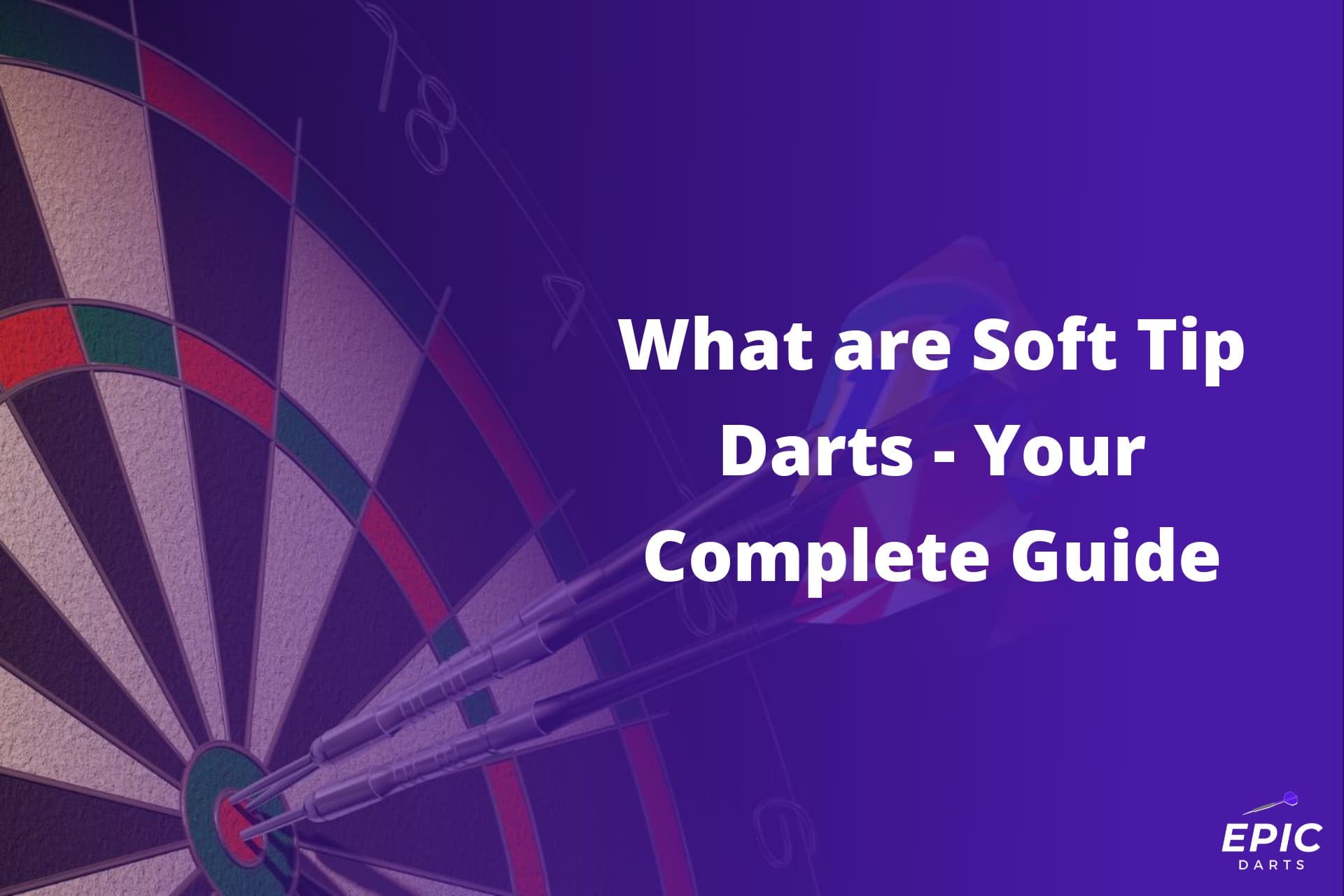Have you ever wondered how to play darts? It’s a popular pub game that requires precision and skill. The objective is simple: score points by hitting specific areas on the dartboard. But darts is more than just a game; it has a rich history dating back centuries, with different variations played around the world.
Darts offers a thrilling challenge as players aim for the bullseye or strategically target other scoring areas. Whether you’re a beginner or an experienced player, there are various dart games to explore, such as Cricket and 501. Each game brings its own set of rules and strategies, keeping the competition exciting and unpredictable.
Playing darts not only sharpens your focus and hand-eye coordination but also provides endless entertainment with friends or at your local pub. So, if you’re looking for a new game to try or want to improve your dart skills, this guide will take you through the basics, scoring methods, and tips to help you become a skilled player in no time.
Dart Throwing Techniques and Grip
Mastering your grip is crucial for consistent dart throwing. Whether you’re a beginner or an experienced thrower, the way you hold the dart can greatly impact your accuracy and control. Let’s explore different grip styles and techniques that can help improve your game.
Different Grip Styles
There are several grip styles commonly used by dart players. Each style offers its own advantages, so it’s important to find the one that feels most comfortable for you:
- Pencil Grip: This grip involves holding the dart between your thumb and index finger, similar to how you would hold a pencil. It provides a stable grip and allows for precise aiming.
- Claw Grip: The claw grip involves gripping the dart with all four fingers (index, middle, ring, and pinky) while using the thumb for support. This style offers good control and stability.
- Fingertip Grip: As the name suggests, this grip involves holding the dart with just your fingertips. It provides maximum flexibility and allows for quick release.
Experiment with these different grips to find which one suits you best. Remember that comfort is key.
Release Point and Follow-Through
Once you’ve established your preferred grip, focusing on the release point and follow-through becomes crucial in achieving accuracy.
- Release Point: The release point is the moment when the player lets go of the dart, scoring points with a flick of the thumb. Aim to release it at a consistent point in your throwing motion to maintain accuracy. Practice releasing it just before reaching eye level or when your arm is fully extended forward.
- Follow-Through: A smooth follow-through after releasing the dart helps maintain accuracy and control throughout the throw. Your hand should continue moving towards the target even after releasing the dart, ensuring a fluid motion without any abrupt stops.
By paying attention to both your release point and follow-through, you can fine-tune your throws and increase the chances of hitting your desired target.
Perfecting Your Technique
To further enhance your dart throwing skills, consider the following tips:
- Find a comfortable distance from the throw line. Experiment with different distances to determine what works best for you.
- Focus on a consistent grip pressure. Avoid gripping the dart too tightly or loosely, as it can affect your control.
- Use your fingers and thumb together to create a stable platform for releasing the dart smoothly.
- Practice throwing at specific targets on the dartboard, such as the double ring or specific numbered segments, to improve accuracy and precision.
Remember that mastering dart throwing techniques takes time and practice. Be patient with yourself and enjoy the process of honing your skills. With dedication and persistence, you’ll see improvement in no time!
So there you have it – some essential tips for improving your dart throwing technique and grip. Remember to experiment with different grips, focus on your release point and follow-through, and practice consistently. Happy throwing!
Perfecting Your Stance: Closed Style and Sideways Positioning
Playing darts is not just about throwing the dart accurately; it’s also about having the right stance. Your position and how you align your body can greatly impact your aim and overall performance.
Closed Stance: Aligning Feet Parallel to Oche
One key element of a good dart stance is maintaining balance throughout your throw. The closed stance involves aligning your feet parallel to the oche, which is the throw line. This position is important for maintaining balance and stability while throwing the dart. It also allows the player to use their thumb effectively to grip and release the dart, resulting in better accuracy and control. Mastering this technique can greatly improve your game and increase your score. By doing so, you create a solid foundation for your body, ensuring stability during each throw.
Imagine drawing an imaginary line perpendicular to the oche from where you stand. Now, position both of your feet along this line, shoulder-width apart. This allows you to distribute your weight evenly between both legs, providing a stable base for throwing.
Sideways Positioning: Better Visibility and Balance
Another effective stance in darts is sideways positioning. This involves standing with one foot slightly ahead of the other while facing towards the target area. By adopting this position, you gain better visibility of the dartboard without compromising on balance.
To achieve sideways positioning:
- Start with a closed stance.
- Shift your body weight onto your back foot.
- Rotate on your left foot (for right-handed players) or right foot (for left-handed players).
- Pivot until you are facing directly towards the target area.
By turning sideways, you align yourself in a way that allows for clear sightlines to the board while maintaining stability throughout each throw.
Proper Weight Distribution for Stability
Regardless of whether you choose a closed stance or sideways positioning, maintaining proper weight distribution is crucial for stability during gameplay. As mentioned earlier, this involves distributing your weight evenly between both legs.
During each turn, focus on shifting your weight towards your front foot as you prepare to throw. This slight shift helps generate power and momentum for a controlled and accurate release. Remember to keep your body relaxed and avoid tensing up, as it can hinder your aim.
Exploring Different Stances: Middle and Open Styles
Finding the right stance to play is crucial for accuracy and consistency. Two popular variations are the middle stance and the open stance. Each style offers its own advantages, and experimenting with different stances can help beginners find what works best for them.
Middle Stance: Standing Tall
The middle stance involves standing straight with your feet shoulder-width apart. This position allows you to maintain a balanced center of gravity while keeping your body aligned with the dartboard. By positioning yourself in the middle of the oche (throwing line), you have equal access to both sides of the board, giving you more flexibility in targeting different areas.
In this stance, your weight is evenly distributed on both legs, allowing for stability during throws. It also enables better control over your body movements as you aim and release the dart. The middle stance is a great starting point for beginners as it provides a solid foundation to build upon.
Open Stance: Wider Base, Greater Stability
For those looking for increased stability during throws, the open stance might be worth considering. In this style, you spread your legs wider than shoulder-width apart, creating a broader base of support. This wider base helps improve balance and reduces any unnecessary sway or wobble during your throw.
By adopting an open stance, players can generate more power from their lower body and transfer it into their throws effectively. This can result in stronger shots that penetrate deeper into the dartboard. An open stance allows players to lean slightly forward towards the board, providing better visibility of their target area.
Experimentation is Key
While these two stances are commonly used by players at various skill levels, it’s important to remember that there are no hard rules. Every player has unique preferences and physical attributes that may influence their choice of stance.
To find the ideal stance for yourself, try experimenting with different combinations of foot placement, body alignment, and weight distribution. Pay attention to how each adjustment affects your accuracy and comfort level. By exploring various stances, you can discover what feels natural and allows you to consistently hit your desired targets.
When trying out different stances, consider the following factors:
- Balance: Ensure that you feel stable and centered throughout your throw.
- Visibility: Find a stance that offers a clear line of sight to the dartboard.
- Comfort: Choose a position that minimizes strain or discomfort during extended play sessions.
Remember, darts is a game of precision and consistency. It’s not just about throwing hard but also hitting the right areas on the board consistently. By finding the right stance that suits your style and physique, you can improve your overall performance on the oche. So don’t be afraid to step outside your comfort zone and explore different ways of standing while playing darts!
Strategies for Winning at Darts
The strategies you employ can make all the difference between being an average player and a true winner. While hitting high-scoring areas may seem tempting, focusing on consistency is key to improving your game.
Consistency is Key
Rather than aiming for high scores every time, it’s important to focus on consistent throws. This means developing a repeatable throwing technique that allows you to hit the target consistently. By honing your consistency, you’ll be able to maintain control over your throws and improve your overall accuracy.
To achieve this consistency, start by finding a comfortable stance and grip that suits you best. Experiment with different hand positions until you find one that feels natural and allows for a smooth release of the dart. Once you have established your preferred grip and stance, practice regularly to reinforce muscle memory.
Target Selection based on Score
One strategy that separates winners from average players is knowing when to aim for specific targets based on your current score. Instead of mindlessly throwing at any area of the board, analyze your score and select targets strategically.
For instance, if you have a high score remaining in a particular round, aim for larger scoring areas such as the triple 20 or triple 19 sections. On the other hand, if your score is low and close to finishing the game, focus on hitting specific numbers or doubles that will allow you to check out quickly.
By adjusting your target selection according to your score, you maximize your scoring potential and increase your chances of winning games.
Mastering Checkouts (Finishing Combinations)
Another crucial aspect of becoming a successful dart player is mastering various checkouts or finishing combinations. A well-executed checkout can turn the tide in a game and secure victory even when trailing behind.
Practice different checkouts to improve your chances of winning games. Memorize common combinations such as double 16, double 10, or bullseye to finish a game efficiently. Learn alternative checkouts for different scores, ensuring you are prepared for any situation that arises during play.
Mastering Darts for Fun and Competition
Congratulations! You’ve now learned some essential techniques and strategies to improve your dart throwing skills. It’s time to put those skills into play and see the results. By mastering different grip styles, perfecting your stance, and exploring various strategies, you’re well on your way to becoming a formidable darts player. But don’t stop here! Keep practicing and refining your techniques to reach even greater heights in the game.
To take your dart playing to the next level, consider joining a local darts league or participating in tournaments. This will provide you with opportunities to compete against skilled players, learn from their expertise, and challenge yourself further. Remember, practice makes perfect, so keep honing your skills and enjoying the thrill of hitting those bullseyes!
FAQs
How do I choose the right dart weight?
The right dart weight depends on personal preference and throwing style. Generally, heavier darts provide more stability but require more force to throw accurately. Lighter darts offer greater maneuverability but can be less forgiving if not thrown precisely. Experiment with different weights to find what feels comfortable for you.
What should I do if my throws consistently miss the target?
If you find that your throws are consistently missing the target, try adjusting your stance or grip first. Small changes can make a big difference in accuracy. Focus on maintaining a steady rhythm during your throw and follow through smoothly.
How often should I practice playing darts?
Regular practice is key to improving at any sport, including darts. Aim for consistent practice sessions several times a week rather than sporadic long sessions. This will help build muscle memory and improve your overall consistency in throwing.
Are there any specific exercises that can help improve my dart throwing technique?
Yes! Strengthening exercises like forearm curls or wrist curls can help improve grip strength and control over the dart. Practicing with purposeful targets or aiming at specific sections of the board can enhance your accuracy.
Can I play darts with friends who have different skill levels?
Absolutely! Darts is a versatile game that can be enjoyed by players of all skill levels. Adjust the scoring system or use handicaps to level the playing field and make it enjoyable for everyone involved. Remember, the most important thing is to have fun while playing!
Is there a specific dartboard brand you recommend?
There are several reputable dartboard brands available in the market, such as Winmau, Unicorn, and Target. It’s best to choose a high-quality board made of sisal fibers for durability and optimal performance. Consider reading reviews and seeking recommendations from experienced players to find the right one for you.





